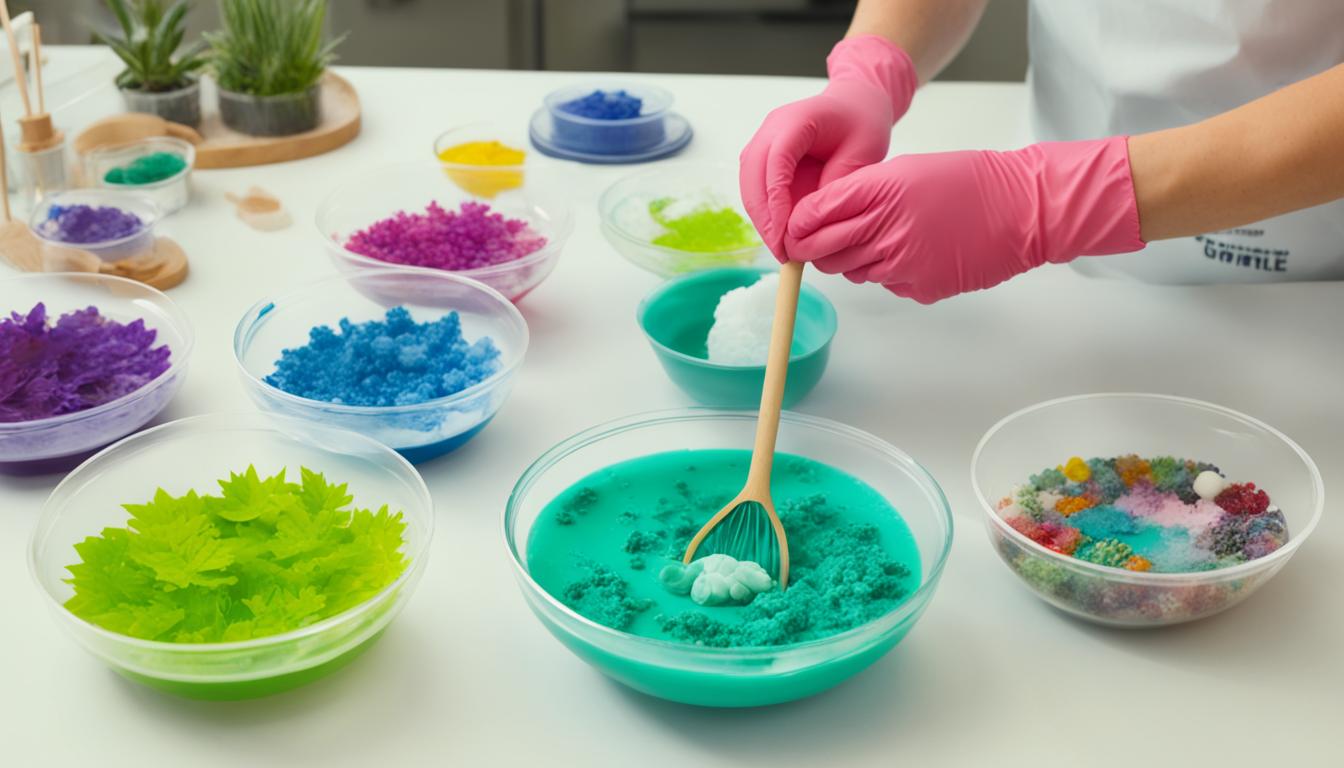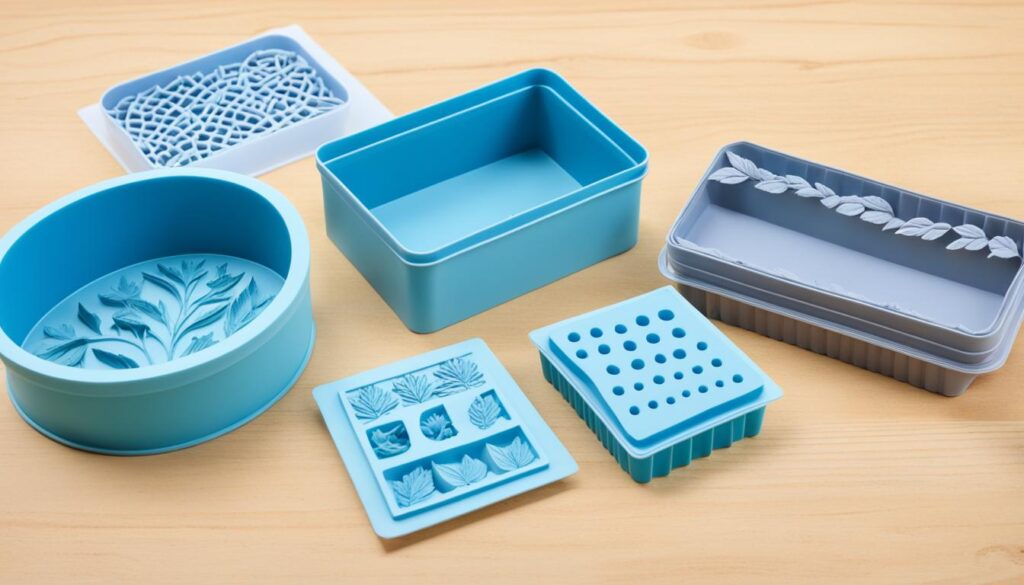
Everything You Should Know About diy resin Mold without silicone
Welcome to the fascinating world of DIY resin mold making! If you’re a lover of all things crafts and creativity, you’re in for a treat. In this article, we will explore the possibilities of creating resin molds without using silicone. Why limit yourself to traditional methods when there are alternative materials and techniques that can yield equally stunning results?
Resin molds are an essential tool for any resin artist or hobbyist. They allow you to create custom shapes and designs, opening the door to endless creative possibilities. While silicone is a popular choice for making resin molds, it does have its limitations. That’s why we’re here to introduce you to the exciting world of DIY resin mold making without silicone.
By exploring alternative materials and methods, you can achieve unique and custom shapes in your resin creations. Whether you’re a beginner or an experienced crafter, this article will provide you with valuable insights, step-by-step instructions, and tips that will empower you on your resin mold-making journey.
So, get ready to dive into the world of DIY resin molds without silicone and unlock your creativity like never before!
Key Takeaways:
- Explore alternative materials and methods for creating DIY resin molds
- Understand the limitations of silicone molds for resin crafting
- Discover step-by-step instructions for various resin mold-making techniques
- Unlock your creativity by trying different molds for unique resin creations
- Enjoy the process of making custom resin molds and have fun with your crafting projects
Why Avoid Silicone for DIY Resin Mold Making
When it comes to DIY resin mold making, silicone is a commonly used material. However, there are reasons why some crafters may choose to explore alternative options. It’s essential to understand the limitations and potential drawbacks of silicone molds to make an informed decision for your resin crafting projects.
Silicone molds offer certain advantages, such as flexibility, heat resistance, and ease of release. They are widely available, making them a popular choice among beginners and experienced crafters alike. However, there are a few reasons why you might consider avoiding silicone for your resin molds.
1. Limited Durability: While silicone molds can withstand repeated use, they may not hold up well over time. Constant stretching and bending can lead to wear and tear, causing the molds to lose their shape and integrity. This can result in distorted or imperfect resin castings.
2. Difficulty with Intricate Details: If you’re working on projects that require intricate details, silicone molds may not be the best choice. The flexible nature of silicone can make it challenging to capture fine details accurately. This can affect the overall quality and precision of your resin creations.
“Silicone molds may not hold up well over time, resulting in distorted or imperfect resin castings.”
3. Limited Size Options: Silicone molds are available in various sizes, but if you’re looking to create larger resin pieces, you may face some limitations. Large silicone molds can be expensive and may require additional support to keep them in shape during casting.
4. Risk of Air Bubbles: Air bubbles are a common challenge in resin casting, and silicone molds may contribute to this issue. The flexibility of silicone can make it difficult to create a completely airtight seal, leading to trapped air bubbles in your resin casts.
5. Releasing Agents Required: Depending on your resin type, you may need to use a releasing agent when using silicone molds. Releasing agents help prevent the resin from sticking to the mold, but they add an extra step to the resin crafting process.
By understanding these limitations and potential drawbacks, you can make an informed decision about whether silicone molds are the right choice for your DIY resin mold making projects. Exploring alternative materials and methods can open up new creative possibilities and help you achieve the desired results.

Alternative Materials and Methods for DIY Resin Molds
In this section, we will explore various materials and techniques that can be used to create DIY resin molds without silicone. By stepping away from traditional silicone molds, you can discover a whole new world of possibilities for your resin crafting projects. Whether you’re looking for alternative materials or unique methods, we have you covered.
One popular alternative material for DIY resin molds is polymer clay. With its ability to hold intricate shapes and textures, polymer clay offers endless possibilities for creating custom molds. Simply sculpt your desired shape using polymer clay, bake it according to the instructions, and voila! You have a one-of-a-kind mold ready for resin pouring.
If you’re in need of a quick and easy option, plastic containers can serve as excellent makeshift molds. From food storage containers to disposable cups, these readily available items can be easily repurposed for your resin molding needs. Just ensure that the container is sturdy enough to hold the weight of the resin.
For those who prefer an organic touch, natural objects can be transformed into unique molds. Seashells, leaves, and even fruits can be used to create intricate details and textures in your resin castings. Simply coat the object with a mold release agent to prevent sticking, pour in the resin, and let it cure.
Step-by-Step Instructions:
- Choose your desired alternative material or method for creating resin molds.
- Gather all the necessary materials, including resin, mold release agent, and any additional tools specific to your chosen method.
- Prepare your alternative mold material by sculpting, shaping, or selecting a suitable object.
- If using polymer clay, bake it according to the manufacturer’s instructions and let it cool before proceeding.
- Apply a mold release agent to your mold material to ensure easy removal of the resin castings.
- Mix and pour the resin into your alternative mold, taking care to eliminate any air bubbles.
- Allow the resin to cure completely, following the recommended curing time mentioned in your resin’s instructions.
- Carefully demold your resin creation from the alternative mold.
- Finish and clean up your resin casting as desired.
With these alternative materials and methods, you can explore endless creative possibilities while making DIY resin molds without silicone. Experiment with different shapes, textures, and objects to achieve unique and personalized resin creations that reflect your artistic vision.
| Alternative Materials | Methods |
|---|---|
| Polymer Clay | Sculpting and baking |
| Plastic Containers | Repurposing and modifying |
| Natural Objects | Using shells, leaves, fruits, etc. |
Remember, creativity knows no bounds when it comes to DIY resin molds. Don’t be afraid to experiment with different materials and methods to find what works best for you. Now, let’s dive into the exciting world of resin crafting and unleash your imagination.

Conclusion
In conclusion, creating DIY resin molds without silicone opens up a world of possibilities for your crafting projects. By avoiding the limitations of silicone molds and exploring alternative materials and methods, you can unleash your creativity and achieve unique results.
One of the advantages of exploring alternative materials is the flexibility it offers. Using materials like polymer clay allows you to easily shape and mold intricate designs, giving your resin molds a truly customized touch. Plastic containers are another accessible option, providing convenience and affordability, especially for larger projects.
Additionally, embracing natural objects as molds not only adds an element of surprise to your creations, but it also promotes sustainability by repurposing everyday items. From seashells and leaves to vintage keys or even fruits, the possibilities are endless.
Remember to experiment, have fun, and enjoy the process of creating your custom resin molds. Let your imagination run wild, and don’t be afraid to try new techniques or combine different materials. With DIY resin mold making, the journey is just as rewarding as the final result.




